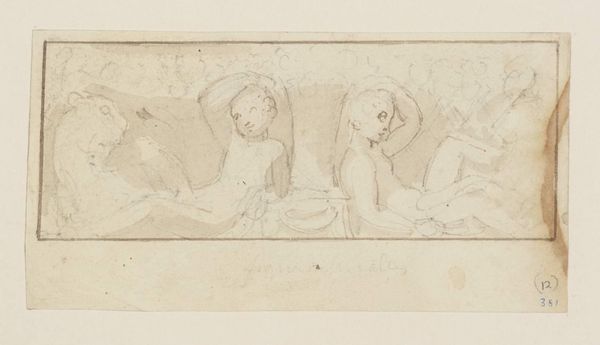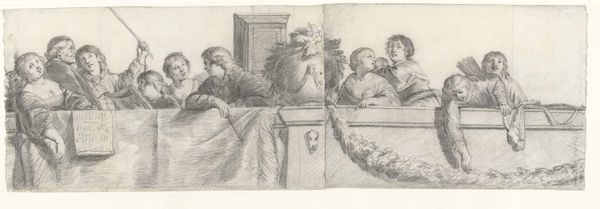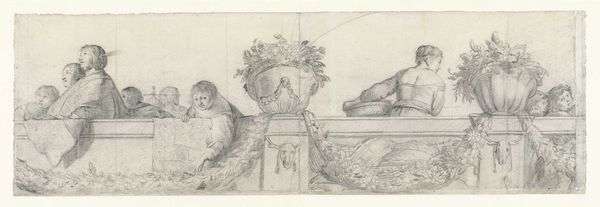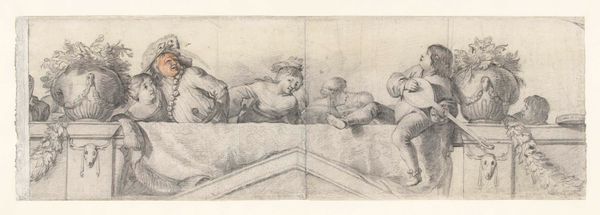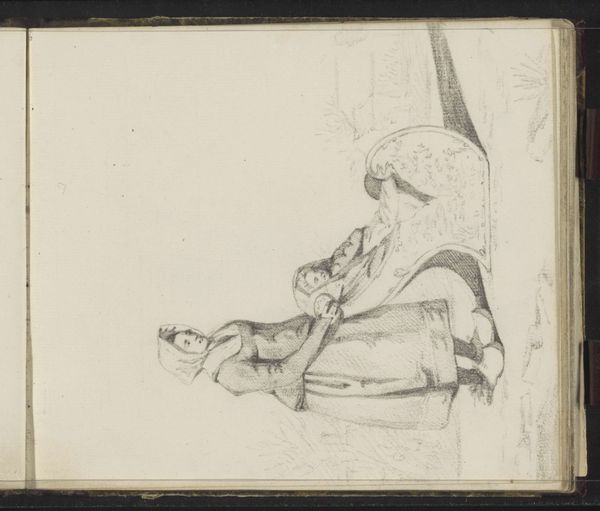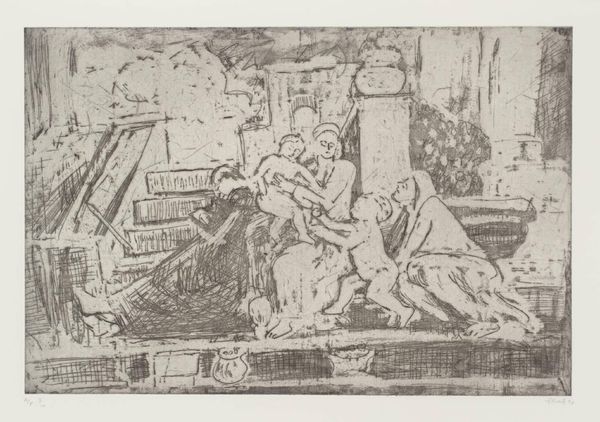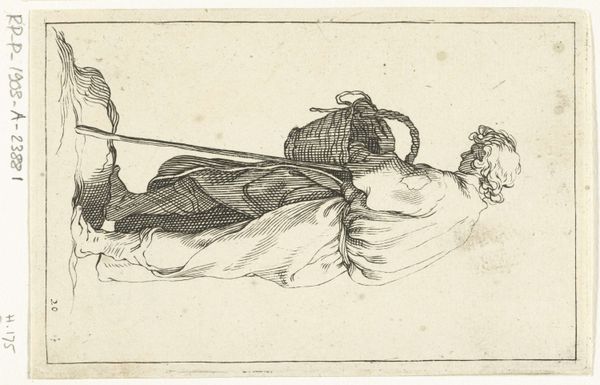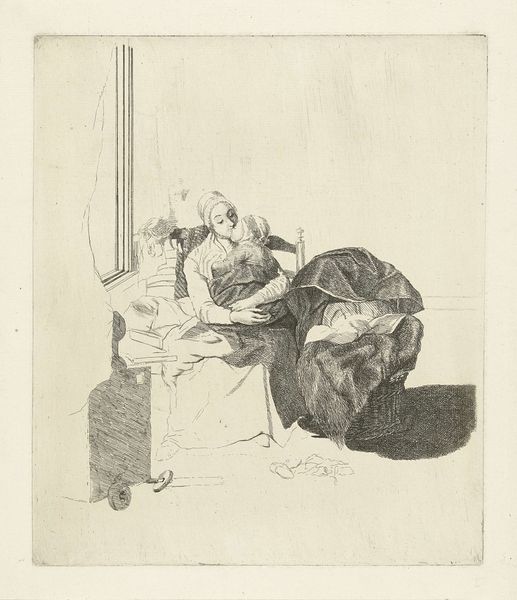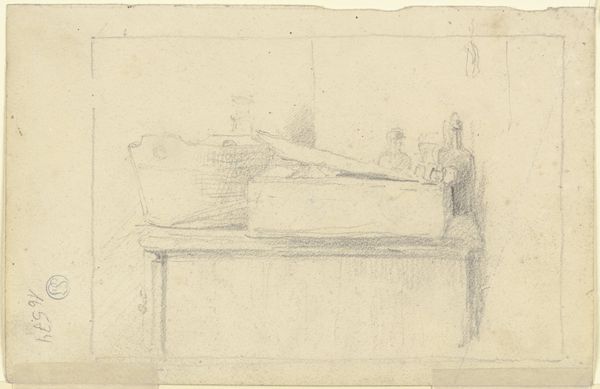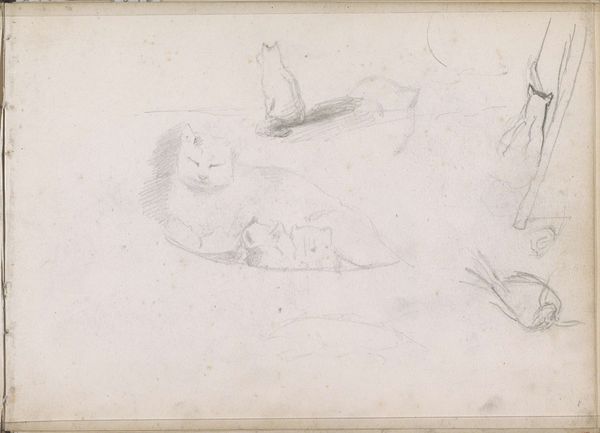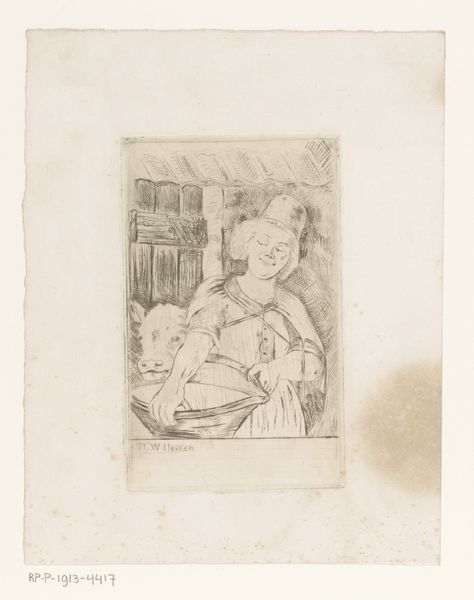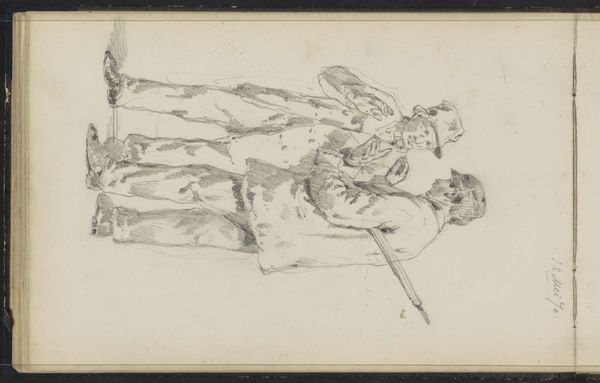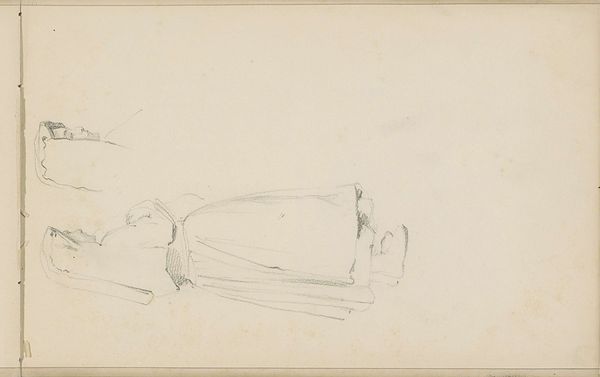
drawing, paper, pencil
#
drawing
#
baroque
#
figuration
#
paper
#
pencil
#
genre-painting
Dimensions: height 209 mm, width 363 mm
Copyright: Rijks Museum: Open Domain
Curator: Cornelis Holsteyn’s "Persons on a Balustrade with Festoons" – done between 1633 and 1638 – really grabs your eye, doesn’t it? This pencil drawing on paper, currently housed in the Rijksmuseum, just hums with life. Editor: Yes, a life lived by pale ghosts it seems! It's a little melancholy to me, with its figures confined behind that ledge and rendered in such delicate shades of gray. It almost feels like they're watching us from another, unreachable, world. Curator: Precisely! And I find that the architectural detail gives us just enough context while keeping a delightful ambiguity around what's truly going on in the scene. Holsteyn captures something special with these few figures set against the backdrop of Baroque ornamentation, don't you think? Editor: The balustrade itself functions as a social barrier, doesn't it? They’re positioned both as spectators and as those being observed. The garland draped along the balustrade, the skull, the seashell...these details echo ideas related to Dutch Golden Age sensibilities, invoking vanity and memento mori symbolism. I read the work as commenting on power dynamics present even in leisurely settings, you know? Curator: It makes one consider what world are we invited to access as a spectator! It is curious. Speaking of context, it’s incredible to consider that during this period, Dutch art moved indoors. You had people captured at everyday activities with that characteristic blend of realism and symbolic layering. "Genre Painting" comes to mind, no? Holsteyn creates the drawing within a society wrestling with its identity, commerce, and its place in the world. Editor: And maybe that balustrade reminds me a little of how, even now, access to these so-called leisurely spheres—the arts, culture—isn’t distributed equally. Some gaze, some perform, some can’t even see over the edge, eh? Curator: I think both interpretations exist in dialogue with the artwork and can shape a really interesting engagement for viewers. It captures the human tendency of wondering what could lie beyond your own fence. Editor: Mmm. Ultimately, art always leaves space for more voices to enter the scene, even a crowded one behind a balustrade, it seems.
Comments
No comments
Be the first to comment and join the conversation on the ultimate creative platform.
